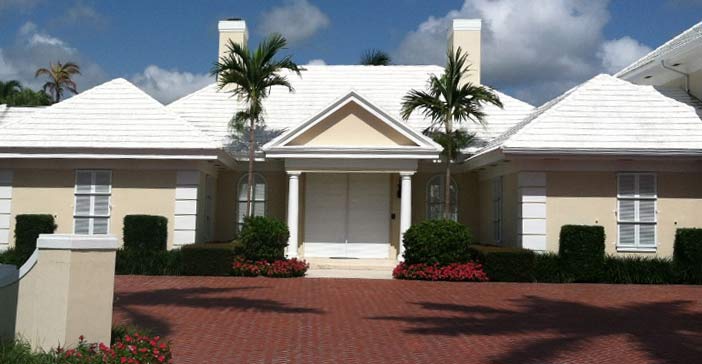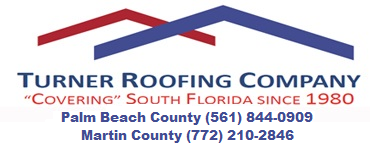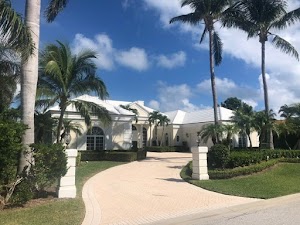Our roofer knows roof repair In Juno Beach FL
Juno Beach
33408
FL
The Distinction In between Wood Shingles & Shakes
When used in roofing covering, wood can be either shakes or shingles. Wood shakes have actually been used for centuries. They are split from logs and frequently left as split to retain the textured, rough-hew effect. A wood shake is quickly recognizable by its thick butt end. With the development of commercial sawmills a wood shake was frequently sawn after splitting to attain an uniform back side.
centuries. They are split from logs and frequently left as split to retain the textured, rough-hew effect. A wood shake is quickly recognizable by its thick butt end. With the development of commercial sawmills a wood shake was frequently sawn after splitting to attain an uniform back side.
These sawmills also produced a totally consistent product with an even taper and similar density by sawing shakes on both sides. This manufactured product is referred to as a wood shingle.
California redwood, western red cedar, cypress, spruce and pine are all utilized to make wood shakes and shingles. Cedar is the most popular wood for shakes, southern yellow pine is likewise popular. Wood shakes and shingles can be pressure treated with fire retardants and chemical preservatives.
Types of Asphalt Shingling
Asphalt or composition shingles are most frequently built from natural material or fiberglass. Asphalt shingles are built upon a base or mat that was initially made from absorbent cotton rags. Later on, more readily available wood pulp or paper changed the natural fibers. Asphalt was put onto that base, referred to as “felt.” In the 1970s fibrous glass was presented, which did not rot like the organic materials. Today, 95 percent of asphalt shingles include fiberglass felt.
Visual appeals
It is hard to beat the look of a natural wood roof. If you are making over a standard older home, cedar roof is probably the historically suitable option. Not that asphalt shingles are an unattractive alternative.
Asphalt shingles come in a wide range of colors and shapes and patterned asphalt roofs can be captivating in their own right. Beyond looking excellent, wood shingling does not win numerous comparison battles with its asphalt-covered competitors. Let’s explore some of the pros and cons up on your roofing …
Benefits and drawbacks:-
Longevity
Life span for both asphalt and wood shingles is a difficult matter. Let’s tick off all the factors that can affect the durability of a roofing covering: quality of setup, diligence of maintenance, quality of products, age of your home, overhanging trees, environment and foot traffic. Chemically dealt with wood will last longer than without treatment shakes and shingles and a shake will survive longer than a shingle. Both asphalt and treated wood shingles can make it through 30 years on a roof, provided ideal conditions.
Sturdiness
Cedar shingles are resistant to bugs but not large quantities of rain. Cedar shakes in a wet environment are susceptible to mold and mildew and rot. Sap from overhanging trees will motivate mildew. When rot embeds in it has actually likely impacted more than a single shake and the entire roof is a candidate for replacement.
Materials & Installation Costs
In the roofing industry, an 18-inch wood shingle is referred to as “Perfection” and 24-inch wide shingles are known as “Royal.” A wood shake is a premium product, costing around $3.50 per square foot versus $2.50 a square foot for wood shingles.
The most expensive option for shingling a roof is wood shakes – between $6.00 to $9.00 per square foot or $600 and $900 per square (100 square feet), installed. Wood shingles are slightly less pricey at $4.00 to $7.00 per square foot or $400 to $700 per square, installed.
Asphalt roofing can cost as little as $2.50 to $4.00 per square foot or $250 to $400 per square, installed.Asphalt has its own weather problems. Algae is most likely to take hold on an asphalt roofing system than cedar shakes. While this will not obstruct your roofing system’s protection capabilities, it does result in undesirable staining and premature replacement on look premises, specifically at resale time. Cleaning up either a asphalt or wood shingle roof with a solution of water and bleach applied expertly with a power-washer will range from $25 to $30 per square. And this is a task best left to qualified experts as a poorly dealt with power-washer can ruin roofing shingles.
Flammability
Some building regulations where fire is a threat restrict or prohibit using wood shingling completely. Asphalt shingles have a high resistance to flames. Keep in mind that wood shakes and shingles can be pressure treated with fire retardants and chemical preservatives.
Wind and Impact Resistance
Cedar shakes and shingles are the clear winner here. Both have proven to be highly impact-resistant and have actually checked to withstand wind speeds of as much as 245 miles per hour (which your home will never see). Asphalt shingles will, nevertheless, blow off a roof in high winds. Fallen branches are likewise a lot more most likely to harm an asphalt shingle that a wood one.
Maintenance
Cedar is a high maintenance product. For beginners, the wood needs to breathe and the roofing system should be kept clear of leaves, branches and particles. Rain gutters should be routinely cleaned up and ventilation kept open for air to flow around the shakes and shingles. Topical treatments can be used as water repellents and ultraviolet inhibitors that can prevent graying of a roofing. If individual shakes or shingles are needed they will match the composition and color of the initial roofing– score one point for cedar.
While algae will not hinder the efficiency of asphalt shingles, mosses that grow on a wet roofing system can trigger the edges to raise or curl leaving them susceptible to a blow-off in storms. Moss can be eliminated with a 50:50 mix of laundry-strength liquid chlorine bleach and water soaked with a low-pressure sprayer. The moss will ultimately loosen up and can be swept the roof. It will return, however, if much of the same measures as keeping a wood roof dry– trimming tree branches, eliminating particles and cleaning rain gutters– are not followed. Changing individual shingles is typically a Do It Yourself job.
ROI, Property Valuations, and Curb Appeal Considerations
In regards to home valuations, changing a cedar roofing system with asphalt will quickly reduce the value of your home or business.– On some historic houses, in addition to homes surrounded by other homes roofed with cedar, such as in historic districts/neighborhoods, this may not even be an option to begin with. But, if you must change a cedar roof with something else, then going with a metal roofing system instead of asphalt will help preserve the assessment and curb appeal of your home.
Final thought
On the expense and maintenance considerations– the “Huge Two” for most homeowners– asphalt shingles are the clear choice over wood shakes. And in fact, about 70 percent of American roofs are covered with asphalt shingles today. On the other hand, those wood shingled-roofs just look so darn excellent, do not they?




